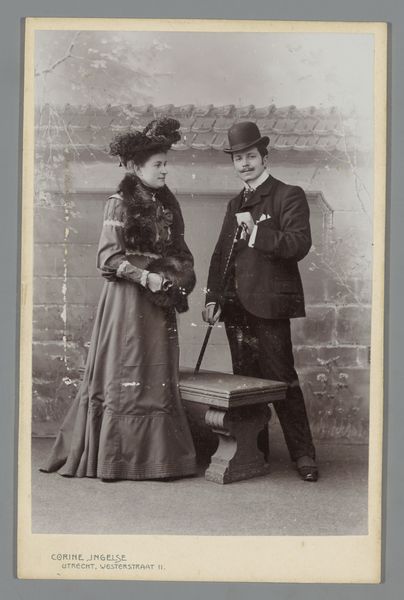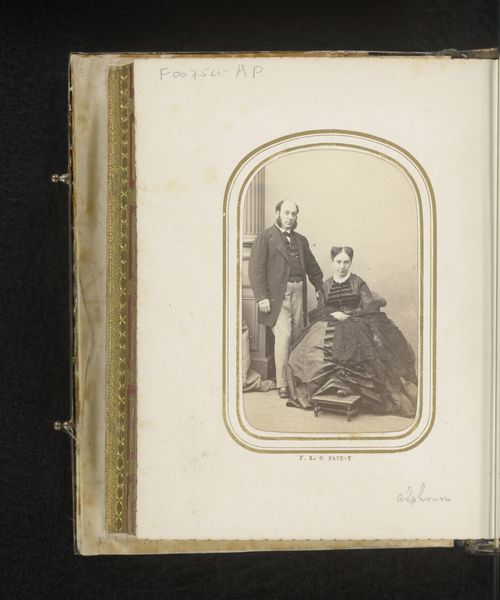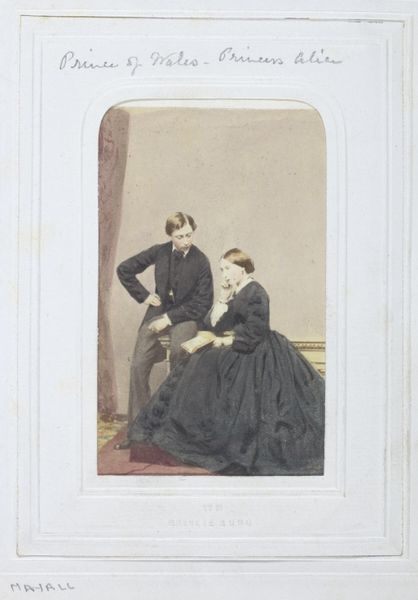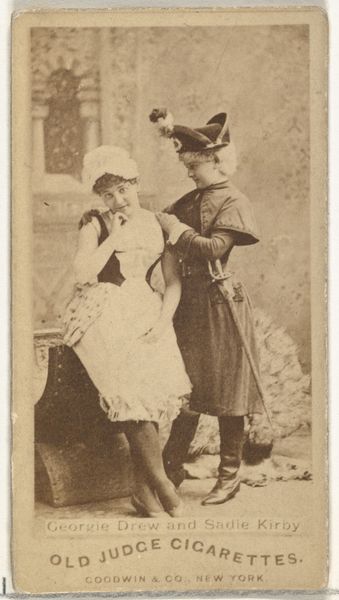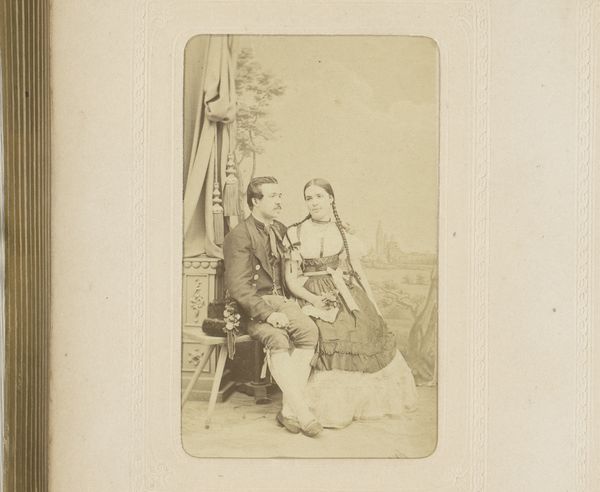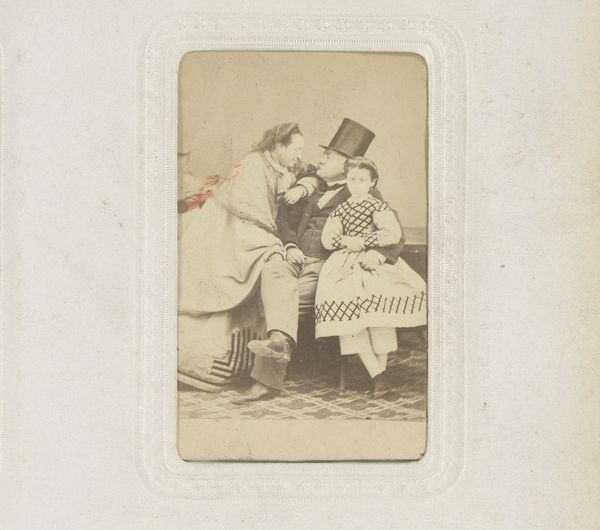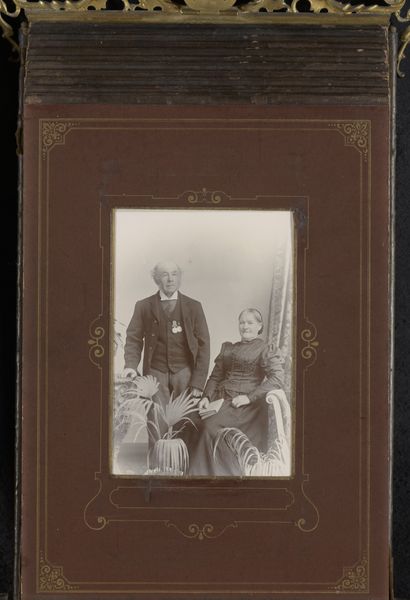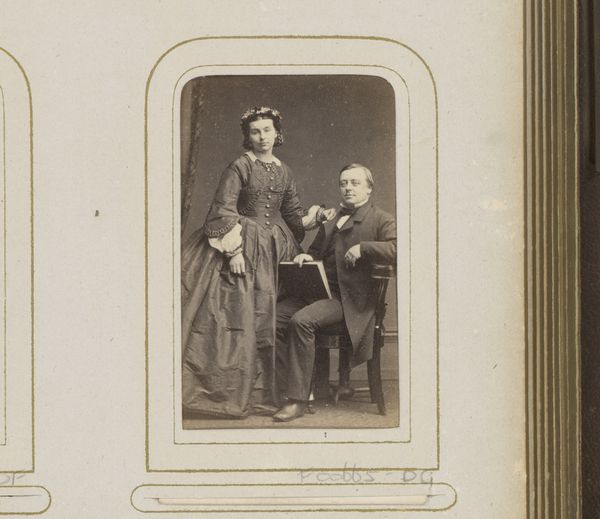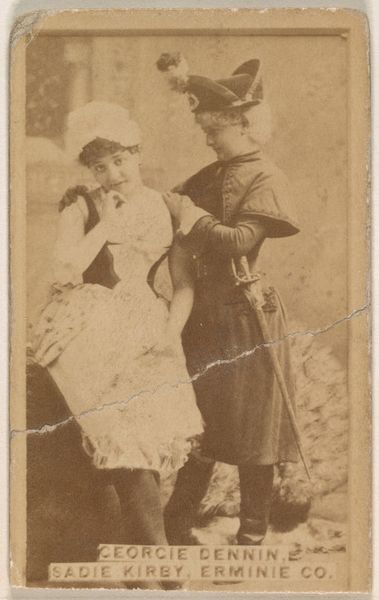
Eugenie Marie de Montijo de Guzman and Napoleon III 1860s
0:00
0:00
Dimensions: 8.6 × 5.3 cm (image/paper); 10.6 × 6.2 cm (mount)
Copyright: Public Domain
Curator: This is a photographic portrait dating back to the 1860s, titled "Eugenie Marie de Montijo de Guzman and Napoleon III," made by André-Adolphe-Eugène Disdéri. Editor: It strikes me as somber, almost burdened. The tonality, that very grey, albumen print feel, certainly adds to that gravity. What do you make of its visual weight? Curator: The subdued tone is certainly deliberate, in line with the reserved presentation expected of royalty. It underscores their status through controlled emotion. The very composition suggests a carefully crafted image of power, hinting at stability. Note the use of symbolic framing too, with that arched form implying a kind of sacred space. Editor: Yet it’s all constructed, isn’t it? Disdéri was famous for his carte-de-visite. A means of mass-producing celebrity, even royalty, for a market hungry for connection to power. Look at the labor involved! All those steps in coating, sensitizing, exposing, and developing! The commodification of empire, almost. Curator: Precisely! The portrait encapsulates an era's aspirations and anxieties, distilled into an easily reproducible format. Notice Napoleon's steadfast gaze contrasted against Eugenie's more subdued, even melancholic expression. Their relationship to France at the time was undergoing dramatic shifts. Editor: And her dress! Look at all the fabric! Tier upon tier. This tells us everything about industrialization and mass production. Suddenly these styles became available, reproducible. But think too of the waste and disposal... the constant turnover of fashion and consumerism's growing impact on materials. Curator: An interesting juxtaposition. These images became tools to construct idealized notions of the imperial family, masking very material, societal tensions and changes, from new textile production to its eventual consumer end-of-life. Editor: Absolutely. Seeing it like that shifts the perception, from romantic symbol to material artifact, freighted with context. Curator: It’s remarkable to consider how images become active participants in constructing cultural memory. Editor: Exactly, digging beneath surfaces allows for the revelation of a broader perspective regarding the very material processes inherent within the empire.
Comments
No comments
Be the first to comment and join the conversation on the ultimate creative platform.

